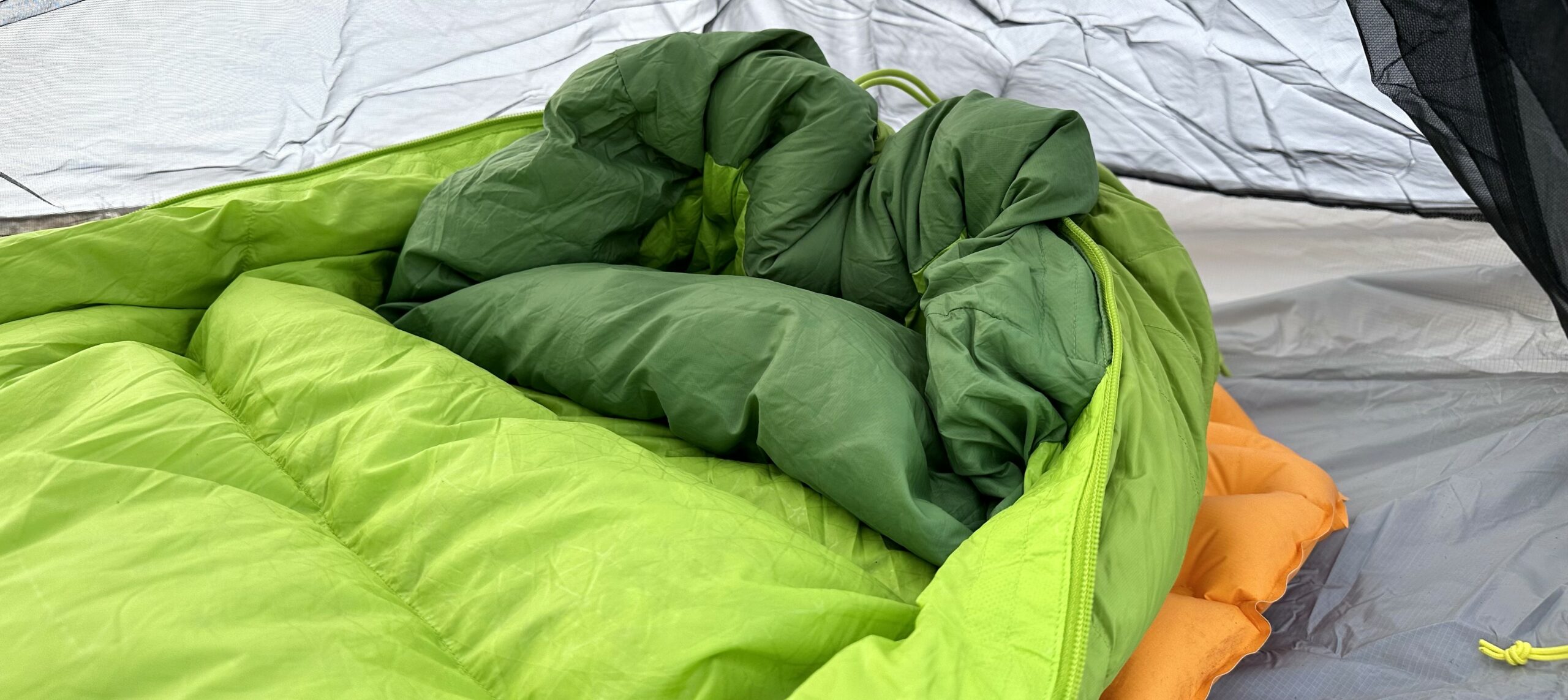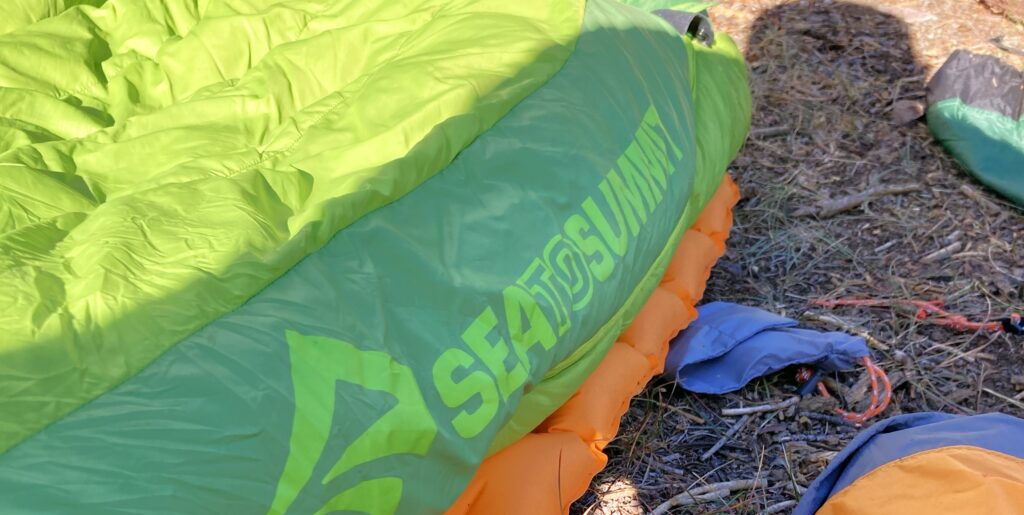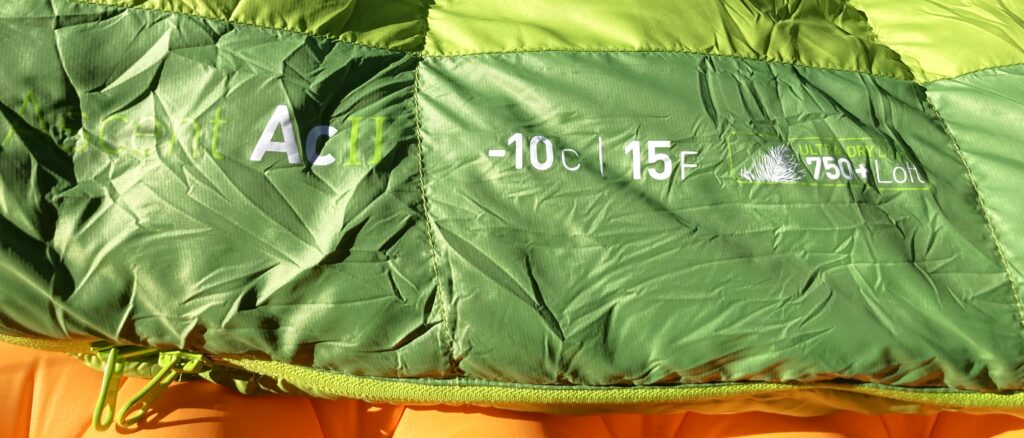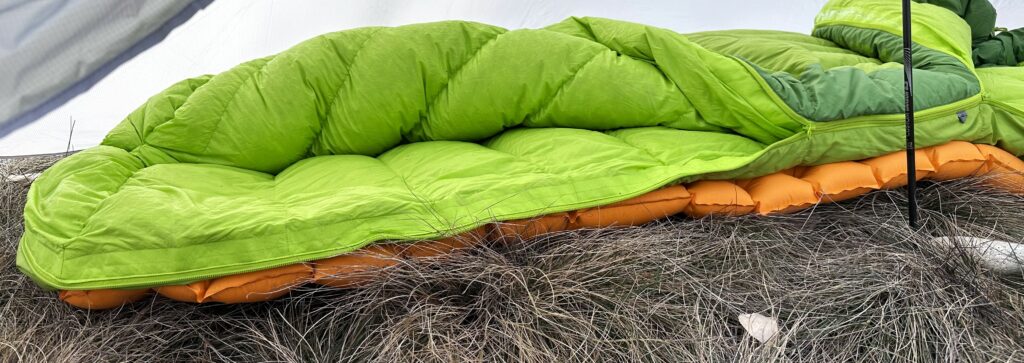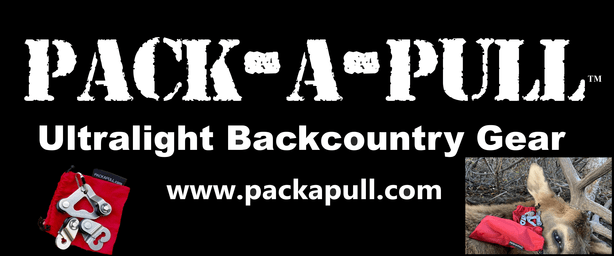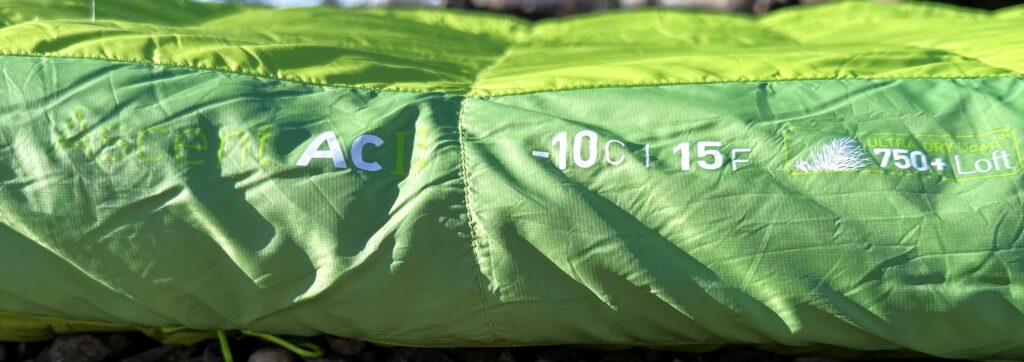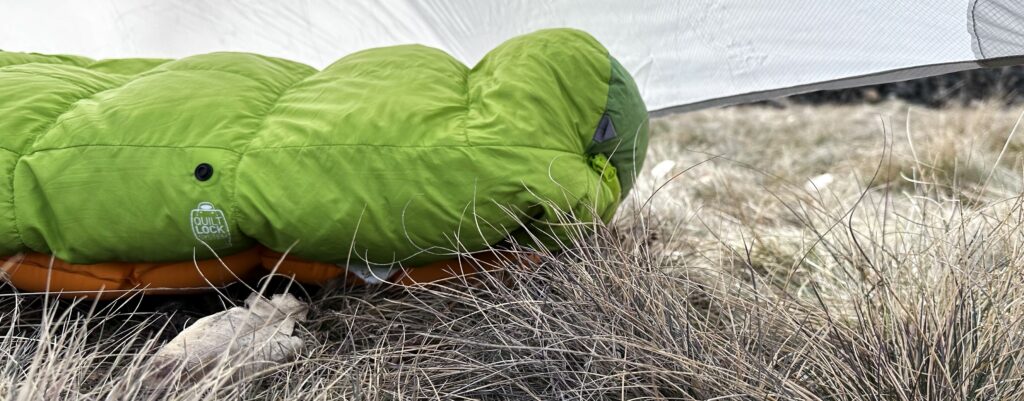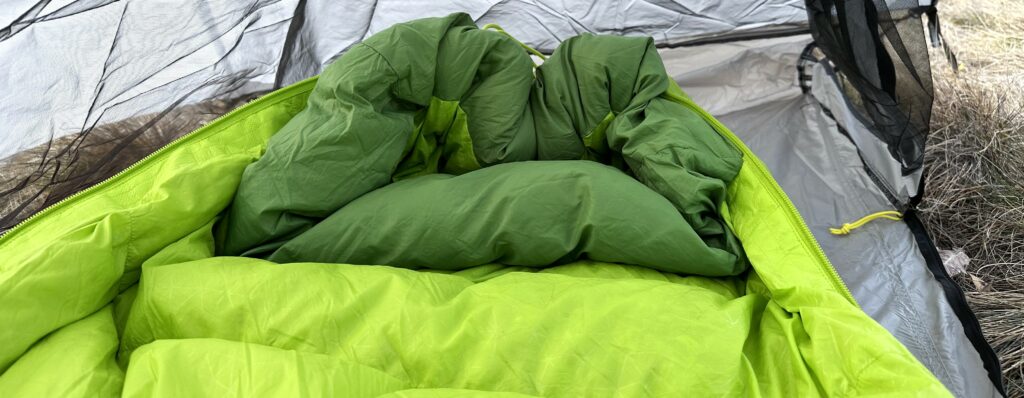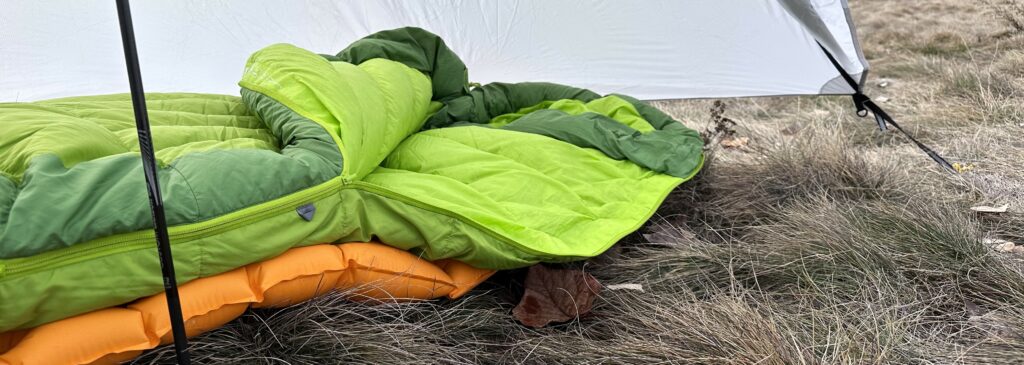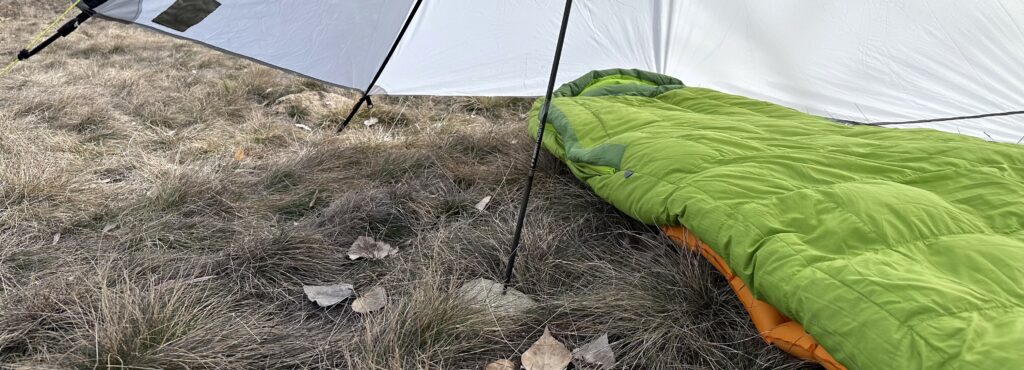Whether you are backpacking, hunting, or camping a good sleeping bag is one of the most essential pieces of gear. This Sea to Summit Ascent review was born from the need to stay warm in the backcountry while keeping the weight to a minimum but also not sacrificing versatility. The Sea to Summit Ascent sleeping bag encompasses all of these things in a down bag that can be used from early spring to late fall, and has the flexibility to be used for just about everything in between.
The Testing: Sea to Summit Ascent Sleeping Bag Review
As we always do here at Backwoods Pursuit, we took the Ascent sleeping bag into the field to see how it performed in real life, backcountry situations. In the spring I used the Sea to Summit Ascent 15 sleeping bag while shed and bear hunting, and kept using it all the way through the summer scouting season. In the fall it went with me chasing elk and deer in the Idaho high country. This ultralight sleeping bag performed amazingly well no matter the situation I threw at it. Below, I’ll dive more into the features that I loved as well as some things which were a minor inconvenience.
Sea to Summit Ascent Sleeping Bag Specs
The Sea to Summit Ascent Sleeping bag comes in a number of sizes, from a REGULAR for those six feet or less to a LONG for folks up to 6’6″, and temperature ratings from 0 to 25 degrees. The Ascent boasts some really impressive specs, particularly for the combination of warmth and versatility you get.
Coming in at just 2 lbs 10.2 oz for the 15 degree model in the LONG version (2 lbs 6.8 oz for the 15 degree model in size REGULAR), you’ll be kept warm in a lightweight and compact package.
Here are some of the other specs for the Sea to Summit Ascent Sleeping bag:
| Sea to Summit Ascent Specs (15 Degree Model) | ||
|---|---|---|
| Model | Regular | Long |
| Weight | 2lb 6.8oz | 2lb 10.2oz |
| Packed Size | 6.2L | 7.8L |
| Down Fill | 19.4oz | 21.7oz |
| Sizing | Relaxed Mummy | Relaxed Mummy |
| Shoulder Width | 61in | 65in |
| Shell Material | Lightweight 20D Nylon | Lightweight 20D Nylon |
| Down Insulation | 750fp Ultra-Dry Premium Duck Down | 750fp Ultra-Dry Premium Duck Down |
Unique Features: Sea to Summit Ascent Sleeping Bag
The Sea to Summit Ascent 15 degree down bag offers a unique set of features that start with its innovative zipper design. Unlike most other ultralight sleeping bags on the market, the Ascent Sleeping bag allows you to use it like a traditional sleeping bag or convert it to a quilt. To do this, simply unzip the bag using the three-zipper system.
However, the versatility doesn’t end there. Another unique feature of the Sea to Summit three-zipper system is that it gives you the ability to fold back the upper part of the bag and ventilate your upper body if you are overheating. You can also opt to fully unzip just one of the two sides if you want a “blanket” over the top of you if zipping up the bag fully would be too warm.
A third zipper is located in the foot of the sleeping bag and can be unzipped to let your feet vent if you want a little air flow on the lower portion of the sleeping bag. This might not sound like something you’d use, but it’s one of the things that allows you to use this Ascent sleeping bag comfortably in a wide range of temperatures.
Zip up all three zippers for maximum warmth, unzip the foot box and/or one of the side zippers to let out some extra heat on those warmer summer nights, or fully unzip the bag and drape it over you like a quilt on really hot summer nights when you just want to keep the cool evening temperatures off you. This system prove to be a dynamite setup!
Materials & Sizing: Sea to Summit Ascent Review
This Sea to Summit Ascent sleeping bag features 750 fill Ultra Dry Down that repels water and offers better warmth if it gets wet that traditional down. The Ascent sleeping bag is cut to be a relaxed mummy shape, offering more room to move than your traditional mummy bag, which I really enjoy. I love the shape of this Sea to Summit Ascent sleeping bag because I don’t feel like I am in a cocoon, but it’s still snug enough to be thermally efficient and super comfortable.
I move a lot when I sleep, going from my side to my back and even my stomach. There is always enough room to switch positions throughout the night without being forced to unzip, move, and then re-zip the sleeping bag. The zippers held their position while moving so I never had to zip it back up as well.
As for the size, I went with the longer one and was really happy that I did! I am right at 6 feet tall, so I was able to get all the way in, head and all, on the colder nights if I opted to do that.
Footbox: Sea to Summit Ascent Review
As mentioned above, the footbox on the Sea to Summit Ascent sleeping bag is one of the more unique among ultralight sleeping bags. It gives you a 3/4 zipper that allows you to unzip the foot of the sleeping bag, which accomplishes a couple things. 1) It allows you to fully unzip the sleeping bag so it can be used as a quilt on warm nights. 2) It can be used to add ventilation while using it as a sleeping bag on those nights when you want warmth, but it’s just not cold enough to fully zip up the bag.
Draw String & Draft Collar: Sea to Summit Ascent Review
The drawstrings, along with the draft collar, are a nice feature for colder nights as they allow you to really snug up and keep the cold air out on frosty nights. With separate drawstrings that control the top and bottom sections of the hood, you can really adjust it to your needs for the night.
Baffle Design: Sea to Summit Ascent Review
The Sea to Summit Ascent sleeping bag offers a unique baffle system in that the upper portion of the bag has a vertical baffle system to help keep the down from migrating to the sides of the bag, causing cold spots. The lower portion of the Ascent sleeping bag has your traditional horizontal baffles as the down in the lower part of the sleeping bag typically doesn’t have a tendency to migrate given that your legs and feet don’t move as much as your arms likely will through the course of the night.
Down Loft: Sea to Summit Ascent Review
The Sea to Summit Ascent sleeping bag is built with a plush 750+ fill RDS certified Ultra Dry duck down. During my use, it seemed to “re-loft” after only a few minutes, which is awesome. After setting out my pad and sleeping bag, then setting up the rest of my camp and organizing my gear, I could crawl into my Sea to Summit Ascent bag, and it was just perfect! No need to rearrange the down.
Zipper: Sea to Summit Ascent Review
Another feature that I love is the free flow zip system. It has a full length zipper on one side and a half zipper on the other side, which is great for both cold and warm nights. One thing that I noted was that during the process of zipping and unzipping the bag, the zipper would sometimes grab some of the shell and bind up. Personally I’ve never had a sleeping bag where this doesn’t happen, so it may be a bit petty to complain about it, but I would love to see some advances in the zipper design to reduce the snagging of the zipper.
Warmth and Versatility: Sea to Summit Ascent Review
Throughout my testing, I found the Sea to Summit Ascent sleeping bag to be comfortable in temperatures around the low 20s, but I was still relatively warm even down into the teens. Given that the Ascent sleeping bag has a “Lower Limit Comfort” rating of 25 degrees, my results were right on par with the rating. Typically, the true comfort rating (where you stay perfectly warm) is somewhere around 10 degrees above the “Lower Limit” rating, so being comfortable in the bag in temperatures in the lower 20s was a win.
Conversely, during the summer months I stayed comfortable in higher temps because I was able to unzip the foot box and/or the secondary side zipper and unzip the top of the bag and fold it down. This showcased the versatility of the Ascent sleeping bag.
When temperatures really heat up, I was able to completely unzip the Ascent sleeping bag and use it as a quilt or top blanket. This feature allowed me to greatly extend the range of temperatures I was able to use the Ascent sleeping bag in.
Finally, if you are backpacking with your significant other, the Sea to Summit Ascent sleeping bag can zip together with another Ascent sleeping bag, creating a nice cozy setup.
Weight: Sea to Summit Ascent Review
Lightweight sleeping systems are a huge topic of conversation among the backpacking and hunting community, and the Sea to Summit Ascent down sleeping bag comes in right at 2 pounds. While not the absolute lightest of the light in the ultralight sleeping bag category, in my opinion, the Ascent sleeping bag is extremely light for how versatile, warm and comfortable it is.
What I Liked: Sea to Summit Ascent Review
There is a ton that I love about this Sea to Summit Ascent down sleeping bag. Near the top of the list is the versatility, warmth, and comfort that this sleeping bag offers, while still keeping the weight to a minimum.
- Versatility
- Warmth
- Weight
- Relaxed cut
- Generous foot box
- Compression bag & long-term storage bag included
- Weight (for its warmth & versatility)
- Hood & draft collar design
What I Didn’t Like: Sea to Summit Ascent Review
There are a few things that I feel could be better about the Ascent sleeping bag. I had some trouble with the zipper snagging from time to time, and for the temperature rating, this bag isn’t the most compact out there. It’s one of the minor prices you pay for the versatility you get.
- Zipper snagged
- Larger compressed size
How to Store a Down Sleeping Bag
I love that Sea to Summit gives you a nice zippered, long-term storage bag as well as a compression stuff sack with the Ascent sleeping bag. The compression stuff sack is critical, especially in getting the size of this bag to a minimum when backpacking with it.
Now, when it comes to long-term storage, it’s easy to get home from your final adventure of the season, unload your gear, and throw it all in a storage bin for the off season, but make sure you properly store your down sleeping bag as well as your insulated sleeping pad. Don’t leave that high quality sleeping bag in its stuff sack long-term as it could reduce the effectiveness of the down. Down needs to be lofted, not compressed when stored, and should be stored indoors if at all possible.
Here are a couple of storage options to keep your down sleeping bag at its peak performance:
- Hang in a closet
- Lay under your bed
- Store in the storage sack provided (shown above)
Hanging a down bag is my first choice, but not everyone has the space for that. Most bags come with sewn-in loops to stick on a hanger. Second to that, I prefer to store the bag lying flat under my bed. This allows the down to be fully lofted. Finally, storing it in the provided storage sack is perfectly acceptable as well. The down is slightly compressed in those storage sacks, but nothing that will cause any damage to the down in your bag.
Picking the Right Sleeping Pad

Selecting the right sleeping pad is even more critical when in cold weather, so make sure you get one that’s warm enough. A good high R-Value pad like this Sea to Summit Ether Light XT Extreme with a 6.2 R-Value will add a few degrees to most sleeping bags and at a minimum, give you the most performance out of whatever sleeping bag you are using.
However, for most of the temperatures you’d use the Ascent Sleeping bag in, something with an R-Value of around 4 should be plenty. You could even get away with an R-Value closer to 3 like the Sea to Summit Ether Light XT Insulated or the Sea to Summit Ultralight Insulated (shown above), but you might be pushing it when temperatures drop into the low 20s, depending on how warm you sleep. In my testing, the Ether Light XT Insulated has kept me warm down into the mid 20s.
Using a higher R-Value pad will ensure that you are getting everything possible out of your sleeping bag or quilt. Often times, it’s worth the few extra ounces if temperatures may be pushing towards the lower limit of your sleeping bag or quilt.
Check out our sleeping pad reviews for some great options with a quilt! We’ve tested a ton of other sleeping bags as well. Check out our sleeping bag reviews!
My ratings for the Sea to Summit Ascent Sleeping Bag
Conclusion: Sea to Summit Ascent Review
Overall, I absolutely love every aspect of this Sea to Summit Ascent sleeping bag. This is definitely a piece of gear that I will use on every trip I go on because of its versatility, weight, and comfort. It performs well in the the fall when it’s cold and on warmer spring/summer nights as well thanks to the full and half-length zipper system. I would absolutely recommend this sleeping bag to anyone looking for an extremely versatile, three- season bag.
Subscribe to Backwoods Pursuit to get Your FREE Backcountry Gear Worksheet!!!
Dial in your gear list, calculate your pack weight, and lighten up your pack with this handy tool!


